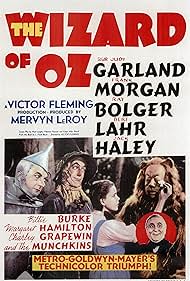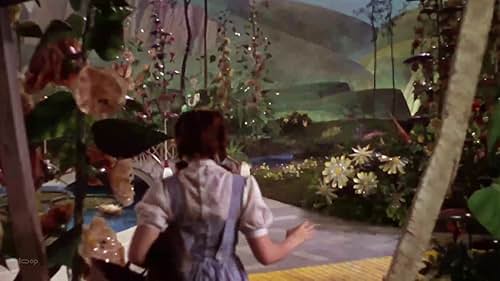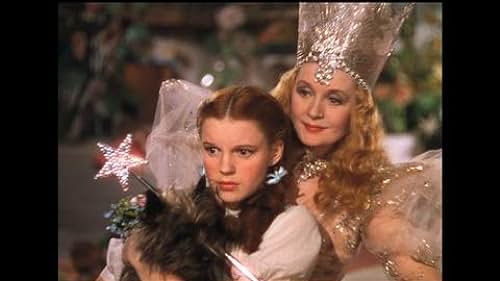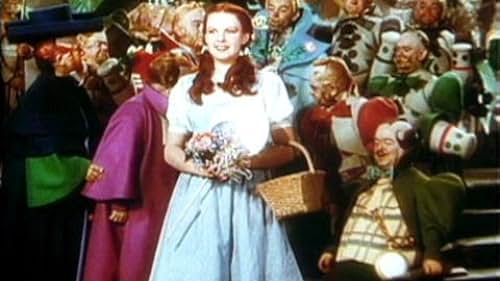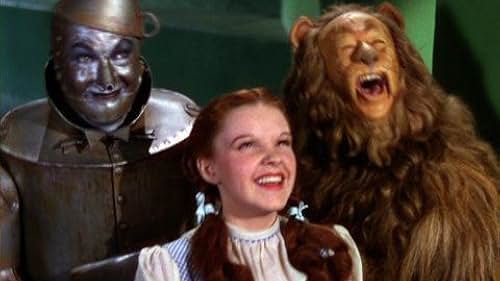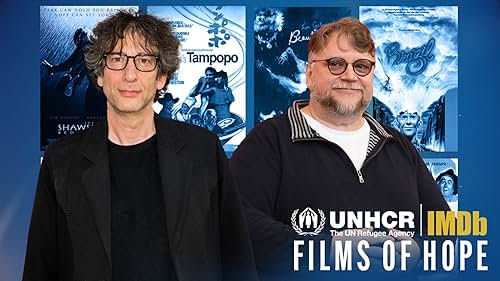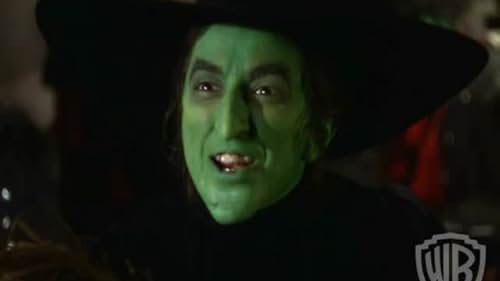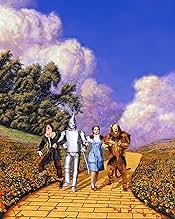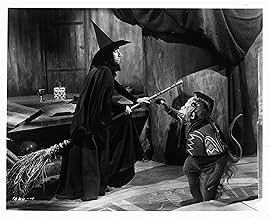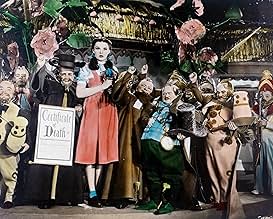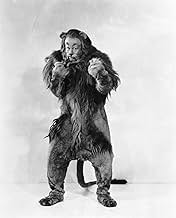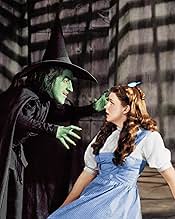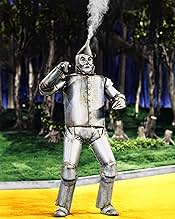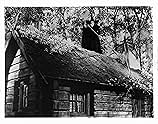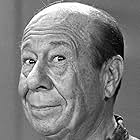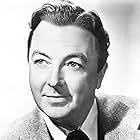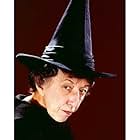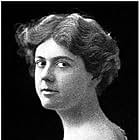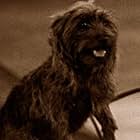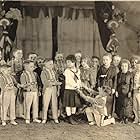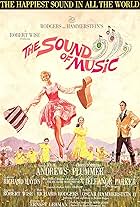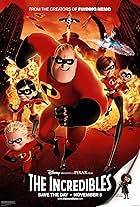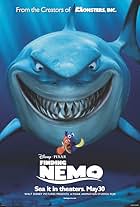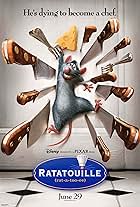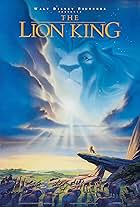Young Dorothy Gale and her dog Toto are swept away by a tornado from their Kansas farm to the magical Land of Oz and embark on a quest with three new friends to see the Wizard, who can retur... Read allYoung Dorothy Gale and her dog Toto are swept away by a tornado from their Kansas farm to the magical Land of Oz and embark on a quest with three new friends to see the Wizard, who can return her to her home and fulfill the others' wishes.Young Dorothy Gale and her dog Toto are swept away by a tornado from their Kansas farm to the magical Land of Oz and embark on a quest with three new friends to see the Wizard, who can return her to her home and fulfill the others' wishes.
- Won 2 Oscars
- 13 wins & 14 nominations total
- The Munchkins
- (as The Munchkins)
- Munchkin
- (uncredited)
- Munchkin
- (uncredited)
- Munchkin
- (uncredited)
- Munchkin
- (uncredited)
- Munchkin
- (uncredited)
- Munchkin
- (uncredited)
Storyline
Did you know
- TriviaJudy Garland found it difficult to be afraid of Margaret Hamilton, because she was such a nice lady off-camera.
- GoofsAfter the Wizard gives the Scarecrow his diploma, he says, "The sum of the square roots of any 2 sides of an isosceles triangle is equal to the square root of the remaining side." This is a misstatement of the Pythagorean Theorem, which is, in fact, about right triangles and not isosceles ones. However, this statement is not true about any triangle, and so it is completely wrong.
- Quotes
Dorothy: How can you talk if you haven't got a brain?
The Scarecrow: I don't know! But some people without brains do an *awful* lot of talking, don't they?
Dorothy: Yes, I guess you're right.
- Crazy creditsToto is listed in the end credits as being played by Toto, when he was actually played by a female dog named Terry.
- Alternate versionsFrom 1968 to 1984, on NBC-TV and CBS-TV airings of the film, the film was edited to sell more commercial time. As the amount of commercial time on network television gradually increased, more scenes were cut. According to film historian John Fricke, these cuts started with solely a long tracking shot of Munchkin Land after Dorothy arrives there. The rest of the film remained intact. Also according to Fricke, more wholesale cutting of the film took place when CBS regained the TV rights in 1975. By the 1980s, the other excised shots included: the film's dedication in the opening credits, continuity shots of Dorothy and Toto running from the farm, establishing shots of the cyclone, the aforementioned tracking sequence in Munchkin Land, the establishing shot of the poppy field, and tiny bits and pieces of the trip to the Wicked Witch's castle. CBS, which had shown the uncut version of the film in 1956, and again from the films first telecast until 1968, finally started to show it uncut again beginning in 1985, by time-compressing it. Network airings in the 1990s were uncut and not time-compressed; the film aired in a 2-hour, 10-minute time period.
- ConnectionsEdited into Chain Lightning (1950)
The movie, in front of and behind the scenes, has become movie folklore. We love the legends about the rotating directors, from George Cukor to King Vidor to Victor Fleming. We know the legend of Buddy Ebsen who had to drop out due to an allergic reaction to the Tin Man makeup and Margaret Hamilton whose dress caught fire and nearly had her face burned off because of the copper-based make-up. We love stories about the problems on the set between personal feuds, sweltering costumes, partying munchkins and the costume designer who had to keep up with Judy Garland's developing bust line. There's even a spurious legend of a ghost on the set. All of these elements make 'The Wizard of Oz' a much bigger legend than it already it, but that's okay because this is the one movie that deserves to be over-hyped. It occupies such a large part of our memories that we want to make it more than it is, to just have one more reason to make it more than a movie, we want it to be a life experience.
That experience is brought to us because we are intimately familiar with its story elements. The dreams that Dorothy sings about and the adventure that follows seem to mirror our yearnings as children. She imagines a bigger place where her problems don't linger and she is free to explore them. She imagines a place where there isn't any trouble and people actually listen to what she has to say. She sees the rainbow as her golden gate to a better place because in her drab Kansas world, the rainbow is the only source of color that she knows. She dreams of a bigger place and imagines a world where troubles melt like lemondrops. We can relate. How many of us as kids sat in our room or in our yards and played, imagining a place to go and characters to interact with, a colorful world bigger than our small, confined worlds.
Oz is meant to represent the colorful palette of our imagination but for Dorothy it is also a place where she does some growing up. The three friends that she meets along the way, The Scarecrow, The Tin Man and The Lion are emblematic of the lessons of bravery, love and devotion and the ability to think for ourselves. The Wicked Witch of the West certainly represents the real dangers along the way. For Dorothy there is a matronly figure, Glinda the Good Witch who intends for Dorothy to discover for herself how to solve her problems, she knows that Dorothy must grow up along the way. In a way, she seems to represent the parent that Dorothy doesn't have back in Kansas. Her aunt and uncle love her but this was a movie made during the depression and we imagine the climate that they live in, where work means keeping the farm. No work = no farm = no home.
For 1939, Dorothy was the perfect character for young girls. She echoes many of the small town country girls who, in the midst of the depression, packed their suitcases and ran to Hollywood seeking fame and fortune in the movies. For them this film is a cautionary tale that they'd be better off if they just stayed home. Judy Garland was perfect in the role, 17 at the time, but with wide-eyes and a beautiful, open face she carries that sense of wonderment of a child. Like most of us as children, her only true companion is a dog named Toto and the most frightening moment in the film is when she is nearly robbed of her best friend. When she sings 'Over the Rainbow' we know that it's to escape an unhappy childhood (she has apparently lost her parents) and for Garland we identify. She began in show business as a kiddie act with her sisters and began her long movie career when she was only 13. She was already a familiar face from 'Love Finds Andy Hardy' and by the time of 'Oz' she was already under contract to MGM. That she was familiar to audiences helped her in the role. That familiarity works well with her ability to project the vulnerability and melancholy that the character has to have. We have to believe that she will become frightened and that her life will be in danger because if she doesn't that we sense that the character can work her way out of the situation herself and our interest wanes.
If movies are a time capsule than 'The Wizard of Oz' wonderfully captures a brief moment of happiness in Garland's life. We know of her problems with studio execs that put her through an exhausting schedule and used drugs to get her going in the morning then put her to sleep at night. We know the legends of her mental and physical problems that dogged her most of her life but 'The Wizard of Oz' sees her at a moment in her life when it all seemed perfect, just as her star was rising and before her problems really began. There's poignancy in that, and that's why I think that the casting of Shirley Temple in the role would have been a mistake. By 1939, Temple was the biggest star in the world her presence in the film would have been too much, she would have stood out and we would only seen Shirley Temple, not Dorothy Gale.
Garland's presence allows the story a certain credibility. I have tried to imagine that famous dance down the Yellow Brick Road with a 4 foot child and it just doesn't fit.
If Garland gives the film its center than I think the production design, awe-inspiring in 1939, is the perfect backdrop. In these early musicals filmed on a soundstage it isn't hard to spot where the soundstage ends. Some have seen that as a flaw but I think it adds to the dreamlike quality of the film. The matte paintings behind the sets add to the storybook quality. The fact that we're in a dream makes it okay that the special effects look a little hasty. That was the genius of the screenplay, that and to establish the Oz characters as characters that Dorothy meets in Kansas. In our dreams we often see people and events that have recently occurred in our lives, but this is the first time I've ever seen it expressed in a movie. In particular is the notion that Professor Marvel keeps showing up as various characters in the dream.
What generosity the filmmakers had. What ingenuity to create this entire world that is colorful and beautiful and scary. What depth of character they created. What messages they send. This is a movie constructed with loving care. We're told that those who worked on the film just thought of this as just another movie, but when I watch the film I find that hard to believe. Certainly from the screenwriters. I wonder if they saw how brilliantly they were tapping our frustrations and our excitement, our dreams, our need and our sense of wonderment. I wonder if they knew the impact of what they were working on, that the lovely sentiments that they created would still resonate 60 years later. I wonder if they knew that their heart's desires weren't that far from our own.
- The_Film_Cricket
- May 29, 2004
- Permalink
Details
- Release date
- Country of origin
- Official site
- Language
- Also known as
- El mago de Oz
- Filming locations
- Stage 28, Sony Pictures Studios - 10202 W. Washington Blvd., Culver City, California, USA(Witch's castle drawbridge; Wash and Brush Up Company; Witch's entrance hall; Witch's tower room; Yellow Brick Road montage song)
- Production company
- See more company credits at IMDbPro
Box office
- Budget
- $2,777,000 (estimated)
- Gross US & Canada
- $24,668,669
- Opening weekend US & Canada
- $5,354,311
- Nov 8, 1998
- Gross worldwide
- $25,637,669
- Runtime1 hour 42 minutes
- Aspect ratio
- 1.37 : 1
Contribute to this page

